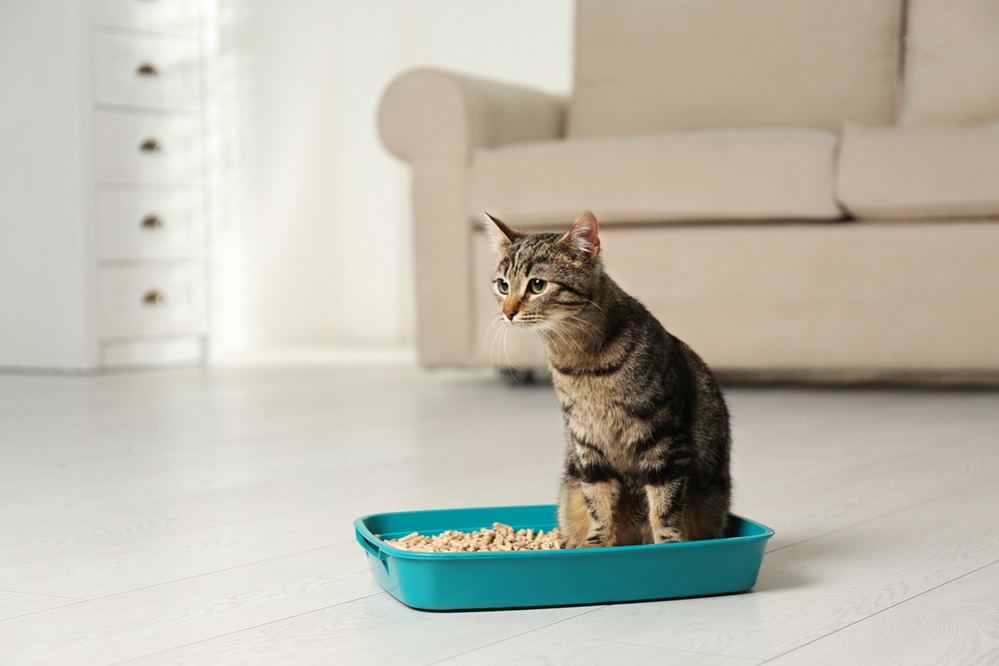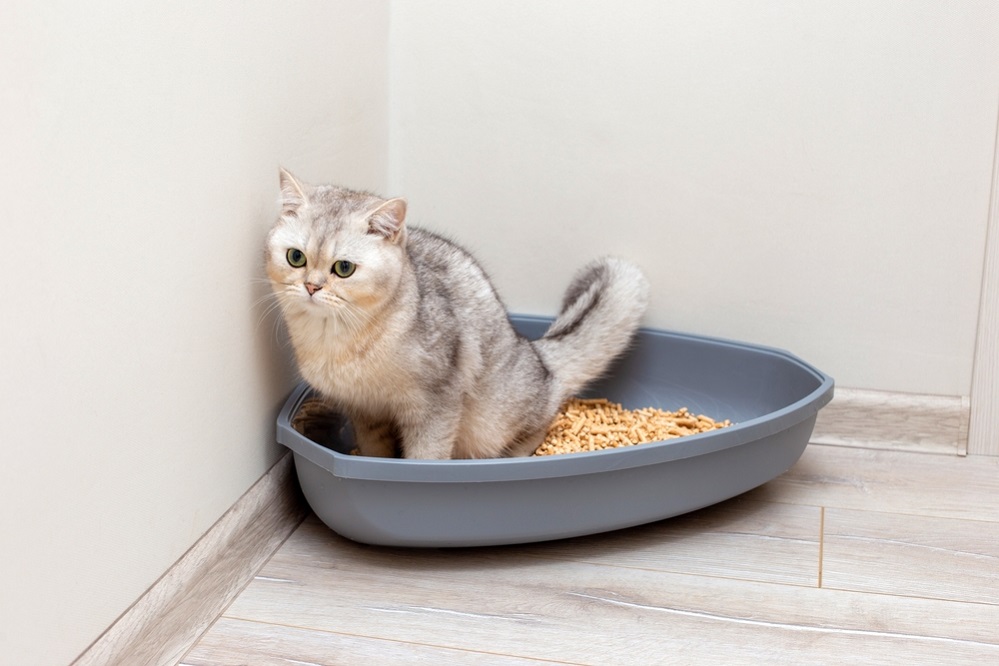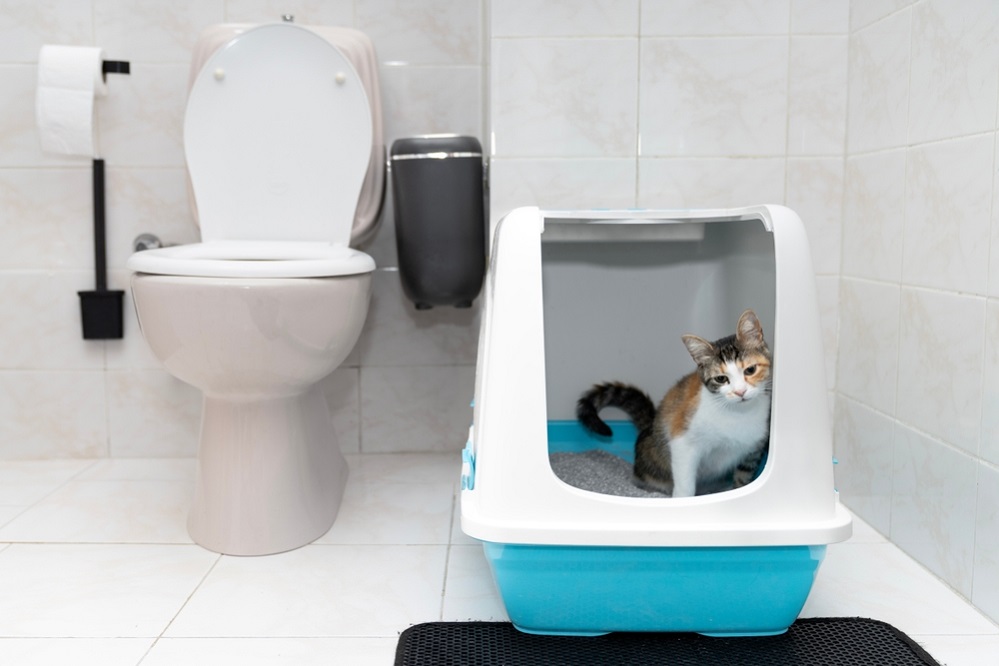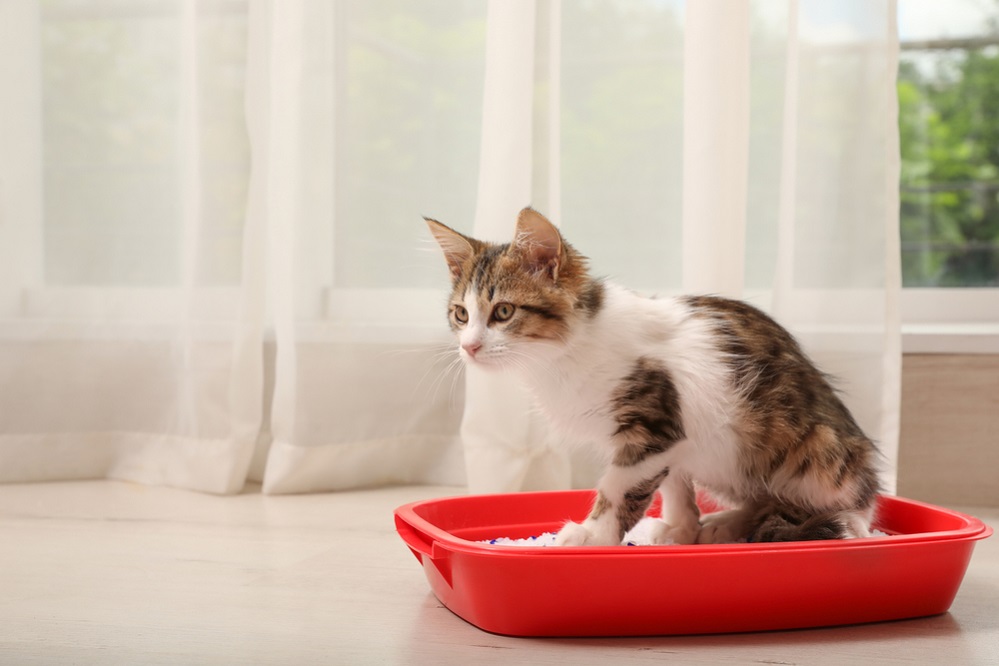Bringing home a cuddly kitten is a joyous occasion, but those surprise puddles or smelly surprises outside the litter box can quickly turn your joy into frustration. Fear not, new cat parent! This guide equips you with the knowledge and strategies to successfully litter box train your furry friend, transforming your home into a haven of litter-box bliss.
Understanding Your Kitten's Elimination Instincts
Before diving headfirst into litter box training, it’s pawsome to understand your kitten’s natural tendencies. Unlike their canine counterparts, cats are famously clean creatures with a deep-rooted instinct to eliminate in a designated area. This built-in litter box love makes training them a much smoother journey, compared to our puddle-prone pups!

Here’s a glimpse into a kitten’s elimination psychology:
The Call of the Dig: Cats have a natural urge to dig and bury their waste. This instinct likely stems from their wild ancestors who buried their waste to avoid detection by predators.
Soft Spot Seekers: Kittens crave a soft, comfortable surface for elimination. This is why they might be drawn to carpets or soft dirt if their litter box doesn’t meet their needs.
Privacy Please!: Cats value privacy when using the bathroom. A litter box tucked away in a quiet corner feels much more appealing than one positioned in a high-traffic area.
By understanding these natural instincts, you can create a litter box environment that caters to your kitten’s needs, encouraging them to use it consistently and keeping those unwanted “presents” out of sight (and smell!).
Setting the Stage for Litter Box Bliss
Now that you’ve unlocked the secrets of your kitten’s elimination psychology, it’s time to design a litter box setup that’s both functional and feline-friendly. Think of it as crafting a luxurious cat condo dedicated solely to bathroom business!

1. The Purrfect Place
Location, Location, Location: Just like humans, cats appreciate privacy when using the facilities. Avoid high-traffic areas like hallways or laundry rooms. Opt for a quiet, easily accessible corner where your kitten can feel comfortable and undisturbed.
Box Bliss: Kittens often feel more secure in a litter box with high sides. This provides a sense of privacy and a place to comfortably dig and bury their waste.
Multiple Marvels: Consider having multiple litter boxes, especially in larger homes or for multi-cat households. A good rule of thumb is one box per cat, plus one extra. This gives each kitty their own “bathroom” and reduces competition that might lead to accidents.
2. The Litter Lowdown
Kitten-Friendly Comfort: Choose a soft, clumping litter that’s gentle on your kitten’s paws. Avoid harsh fragrances, as some kittens find them unpleasant. Clumping clay litters are popular choices, but there are also options made from recycled paper or natural materials.
Shallow and Sweet: Fill the litter box with a shallow layer of litter, around 1-2 inches deep. This is easier for young kittens to navigate and allows them to express their natural digging instinct.

Scooping Savvy: Develop a scooping routine! Cats are very sensitive to smell, and a dirty litter box is a major deterrent. Scoop waste daily to keep the box clean and inviting, and perform a complete litter box change and cleaning once a week.
Remember: By creating a litter box environment that caters to your kitten’s natural instincts and preferences, you’re laying the foundation for successful litter box training and a happy, mess-free home for you both!
Teaching Your Kitten the Litter Box Routine
Now that your luxurious “cat condo” (aka litter box) is set up, it’s time to gently guide your tiny tiger towards using it consistently. Forget harsh punishment – positive reinforcement is the key to unlocking litter box success! Here’s how to turn your kitten into a litter box pro:
1. The Power of Praise
When you see your kitten using the litter box, shower them with praise! A gentle petting session, a verbal “good kitty,” or even a yummy treat can create a positive association with using the litter box.

2. Decode the Digits
Kittens often give subtle clues before they need to eliminate, such as scratching the floor, pacing near the litter box, or vocalizing. Learn to recognize these signs and gently scoop them up, placing them in the litter box. This helps them connect the urge to eliminate with the designated spot.
3. Post-Meal Potty Breaks
Just like humans, kittens tend to eliminate after meals and playtime. Develop a routine of taking your kitten to the litter box after these activities. This predictability helps them anticipate their bathroom needs and associate the litter box with elimination.
4. Confine for Success
When you can’t directly supervise your kitten, confine them to a playpen equipped with a litter box, food, water, and a cozy bed. This prevents accidents and allows them to develop bladder and bowel control in a safe, controlled environment. As they mature, gradually increase their playtime outside the pen while keeping an eye on them.

Remember: Patience is key! Accidents are inevitable during the learning process. Focus on positive reinforcement, consistent routines, and cleaning up accidents thoroughly with an enzyme cleaner to eliminate lingering odors that might attract your kitten back to the spot.
By using these gentle and effective methods, you’ll soon be celebrating your kitten’s litter box mastery and enjoying a purrfectly mess-free home!
Decoding Litter Box Disasters
Even with the best intentions and a luxurious cat condo (aka litter box!), your purrfect training plan might encounter a few hiccups. Don’t despair, fellow feline friend! Here’s a guide to identifying and resolving common litter box mishaps:
1. The Stubborn Streaker
Medical Check-Up: If your kitten has persistent accidents outside the litter box, a visit to the veterinarian is crucial. Certain medical conditions, such as urinary tract infections or bladder stones, can cause discomfort and lead to litter box avoidance. Early diagnosis and treatment are essential for your kitten’s health and litter box success.

Stressful Triggers: Cats are sensitive creatures and can become stressed by changes in their environment, new pets, or loud noises. Identify any potential stressors and take steps to minimize them. Providing a safe haven for your kitten, like a cozy cat tree or hiding spot, can help them feel more secure and less likely to resort to eliminating outside the box.
2. The Box Battle
Cleanliness Counts: Cats are incredibly clean and have a low tolerance for unpleasant odors. A dirty litter box is a major reason kittens might choose alternative elimination spots. Maintain a consistent scooping routine and perform a complete litter box change weekly, including washing the box with warm soapy water (avoid harsh chemicals!).
Location, Location, Location: Revisit the litter box location. Is it in a quiet, easily accessible corner? Is it far from noisy appliances or high-traffic areas? If not, consider relocating it to a more suitable spot that caters to your kitten’s privacy preferences.
3. The Multi-Cat Mishap

Box Bonanza: In multi-cat households, ensure there are enough litter boxes. This reduces competition and territorial issues around the litter box. Place the boxes in separate locations throughout the house to provide each cat with their own “bathroom.”
Box Size Matters: Consider the size of the litter boxes. Larger cats might feel cramped in standard-sized boxes, leading to discomfort and avoidance. Opt for larger litter boxes that accommodate your cats comfortably.
Remember: Consistency and patience are key when troubleshooting litter box problems. Address any underlying medical issues, maintain a clean and inviting litter box environment, and continue using positive reinforcement methods. With a little detective work and these tips, you can transform your stubborn streaker into a litter box champion!
Celebrating Your Kitten's Litter Box Mastery!
Congratulations! Your once tiny tiger has transformed into a litter box pro! While the journey might have had its share of “accidents” (both literal and metaphorical!), you’ve successfully trained your furry friend to use their designated bathroom. This is a cause for celebration!

Why Celebrate?
Celebrating your kitten’s litter box success reinforces positive behaviors and strengthens the bond between you. It shows them that you appreciate their efforts and encourages them to continue using the litter box consistently.
How to Celebrate?
Shower Them with Love: Cuddle sessions, gentle petting, and a verbal “good kitty” go a long way. Positive reinforcement keeps them motivated to maintain their good litter box habits.
Treat Time!: Break out the catnip or offer a small, healthy treat reserved for litter box victories. This creates a positive association between using the box and getting rewarded.
New Toys!: Celebrate with a new, exciting toy! This provides mental and physical stimulation and channels their playful energy into positive activities.
Remember: Continued positive reinforcement is key, even after your kitten has mastered the litter box. The occasional praise or treat keeps them on track and ensures a happy, mess-free home for you both.
Beyond Celebrations

As your kitten matures, you can gradually transition to a less frequent scooping routine, depending on the litter type you use. However, regular cleaning is still essential to maintain a fresh and inviting litter box environment.
With patience, dedication, and these helpful tips, you’ve successfully transformed your kitten into a litter box whiz! Enjoy the peace of mind and the purrfectly clean home that comes with a well-trained feline companion!
FAQs
What type of litter box should I get for my kitten?
Size Matters: Choose a litter box with high sides to provide your kitten with a sense of security and privacy. For larger cats, consider an extra-large box to ensure comfort.
Open vs. Covered: Some kittens prefer open boxes, while others might feel more secure in a covered one. Experiment to see what your kitten prefers.
Multiple Marvels: In multi-cat households, or for larger homes, consider having multiple litter boxes. A good rule of thumb is one box per cat, plus one extra.
What kind of litter should I use for my kitten?
Choose a soft, clumping litter that’s gentle on your kitten’s paws. Avoid harsh fragrances, as some kittens find them unpleasant. Clumping clay litters are popular choices, but there are also options made from recycled paper or natural materials.
How often should I clean the litter box?
Develop a scooping routine! Cats are very sensitive to smell, and a dirty litter box is a major deterrent. Scoop waste daily to keep the box clean and inviting. Perform a complete litter box change, including washing the box with warm soapy water (avoid harsh chemicals!), once a week.
My kitten keeps having accidents outside the litter box. What's wrong?
Medical Check-Up: If accidents are persistent, consult your veterinarian to rule out any underlying medical conditions.
Location, Location, Location: Ensure the litter box is in a quiet, easily accessible location, away from noisy appliances or high-traffic areas.
Stressful Triggers: Identify and address any potential stressors in your kitten’s environment, such as new pets or loud noises. A stressed kitten might resort to eliminating outside the box.
Positive Reinforcement: Focus on praising your kitten for using the litter box and avoid punishment for accidents.
At what pace can I expect my kitten to learn to use the litter box?
Patience is Key: There’s no one-size-fits-all answer. It depends on your kitten’s age, breed, and individual development. Some kittens can be trained in a few weeks, while others might take several months. Be patient and consistent, and eventually, those accidents will become a thing of the past!
Conclusion
You’ve reached the end of our kitten litter box training guide. While the journey might have had its share of “surprises,” you’ve equipped yourself with the knowledge and tools to successfully navigate this essential stage.
By successfully litter box training your kitten, you reap a multitude of benefits:
A Clean and Happy Home: No more unwanted puddles or smelly surprises!
A Stronger Bond: Positive reinforcement strengthens the bond between you and your feline friend.
A Well-Adjusted Cat: A cat who understands appropriate elimination habits is a happier and more confident companion.
So, take a deep breath, celebrate your progress, and enjoy the purrfectly clean home life that awaits you and your well-trained, litter box-using champion!













